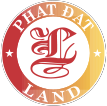WHEAT
CBOT Wheat
CONTRACT SPECIFICATION
| Trading Screen Product Name | Chicago SRW Wheat | ||||
| Commodity Code | ZWA | ||||
| Contract Size | 5 000 bushels/lot | ||||
| Price Quotation | cent / bushel | ||||
| Trading Hours | Monday-Friday Session 1: 08:00 A.M - 08:45 P.M Session 2: 09:30 P.M - 02:20 A.M (the next day) |
||||
| Minimum Price Fluctuation | 0.25 cent / bushel | ||||
| Contract Series | March, May, July, September, and December | ||||
| Delivery Registration Day | The fifth business day prior to the First Notice Day | ||||
| First Notice Day | The last business day of the month prior to the contract month. | ||||
| Last Trading Day | The business day prior to the 15th calendar day of the contract month. | ||||
| Margin | As MXV required | ||||
| Position Limit | As MXV required | ||||
| Price Limit |
|
||||
| Settlement Method | Deliverable | ||||
| Quality Standards | No. 1, No. 2 Wheat |
QUALITY STANDARDS
In accordance with the regulations of Chicago SRW Wheat traded on Chicago Board of Trade (CBOT).
Product infomation
Introduce
Wheat or buckwheat is a type of grass, widely regarded as a cereal grain worldwide. Wheat is an important product for humans, the output is second only to corn in food crops (in 2017). Wheat grain is used to make flour in breads, noodles, confectionery, drinks; fermented to produce alcohol or biofuel.
Wheat futures contracts are traded on the CBOT exchange with expiration months 3,5,7,9,12.
Wheat futures contracts are traded on the CBOT exchange with expiration months 3,5,7,9,12.
Characteristics
Wheat was first grown around 9600 BC in the Middle East. In 2014, wheat was the most planted food crop of any other food crop. Wheat, maize, and rice account for about 87% of global food production. In which, wheat has more cultivated area than any other crop in the world with about 218 million hectares (in 2015). Wheat is grown in all parts of the world except Antarctica, it can adapt from the arctic north to the equator, from the lowlands at sea level to the 4,000m high plains of Tibet. Wheat grows well in temperate regions even when the crop is relatively short. In addition to its high adaptability to various climates, wheat is also easy to store, consume, and process.
Wheat has about 30000 varieties of 14 species in the world, of which about 1000 are of commercial importance. Among them, common wheat (Triticum aestivum) is the most widely cultivated wheat in the world. Wheat is also named by colors such as white wheat, red wheat (common) or black, yellow, and blue wheat. Farmers also named varieties of wheat as winter wheat, spring wheat.
Commercial wheat is classified according to the nature of the grain. Traders and producers use this classification to determine the type of wheat they need because each variety has a specific use. Wheat is about 71% carbohydrate, 13% water, 13% protein (mainly gluten) and 1.5% fat, is an important food for humans, especially in underdeveloped countries.
Wheat typically needs 110 to 130 days between sowing and harvesting, depending on climate, seed type and soil conditions. Wheat also requires farmers to have a detailed understanding of each stage of crop growth to use fertilizers, herbicides, etc. accordingly.
Wheat has about 30000 varieties of 14 species in the world, of which about 1000 are of commercial importance. Among them, common wheat (Triticum aestivum) is the most widely cultivated wheat in the world. Wheat is also named by colors such as white wheat, red wheat (common) or black, yellow, and blue wheat. Farmers also named varieties of wheat as winter wheat, spring wheat.
Commercial wheat is classified according to the nature of the grain. Traders and producers use this classification to determine the type of wheat they need because each variety has a specific use. Wheat is about 71% carbohydrate, 13% water, 13% protein (mainly gluten) and 1.5% fat, is an important food for humans, especially in underdeveloped countries.
Wheat typically needs 110 to 130 days between sowing and harvesting, depending on climate, seed type and soil conditions. Wheat also requires farmers to have a detailed understanding of each stage of crop growth to use fertilizers, herbicides, etc. accordingly.
Wheat production and trade situation
In 2018, the whole world produced 772 million tons of wheat, 750 million tons higher than in 2017. China is the world's largest wheat producer for many years in a row with over 130 million tons per year. The country has about 24 million hectares for wheat cultivation. Followed by India, Russia and the United States. However, the domestic demand of China and India is very high, so these two countries are not the main exporters of wheat.
Russia accounts for about 19% of the value of wheat exports, with about $7.39 billion in exports, followed by the United States with about 14% of the value, about $5.82 billion.
The major wheat importing countries are Egypt, Indonesia
Russia accounts for about 19% of the value of wheat exports, with about $7.39 billion in exports, followed by the United States with about 14% of the value, about $5.82 billion.
The major wheat importing countries are Egypt, Indonesia
Major factors affecting the wheat market:
- Weather events: Climate, weather around the world, especially in local cropping regions can affect supply
- USDA's World Agricultural Supply and Demand Estimates (WASDE) report makes a comprehensive monthly forecast, which often turns the corn market in an unexpected direction
- The USDA Outlook, released in March, details how many and what types of crops U.S. farmers plan to grow.
- Other Reports on U.S. Agricultural Exports
- Trade, political, bilateral, and multilateral events related to agriculture
- USDA's World Agricultural Supply and Demand Estimates (WASDE) report makes a comprehensive monthly forecast, which often turns the corn market in an unexpected direction
- The USDA Outlook, released in March, details how many and what types of crops U.S. farmers plan to grow.
- Other Reports on U.S. Agricultural Exports
- Trade, political, bilateral, and multilateral events related to agriculture











